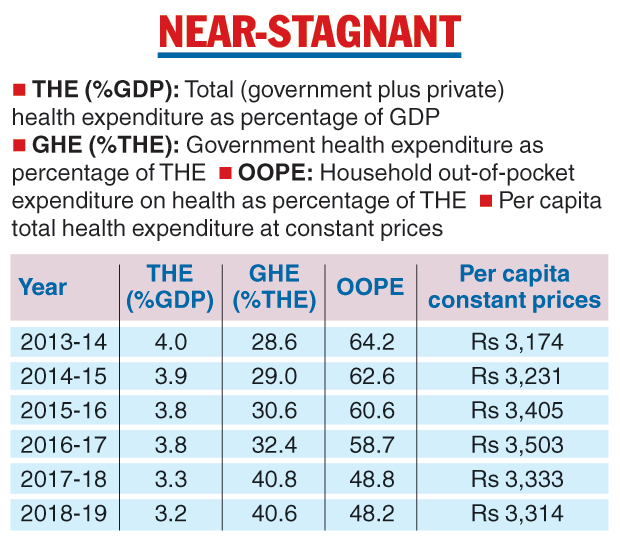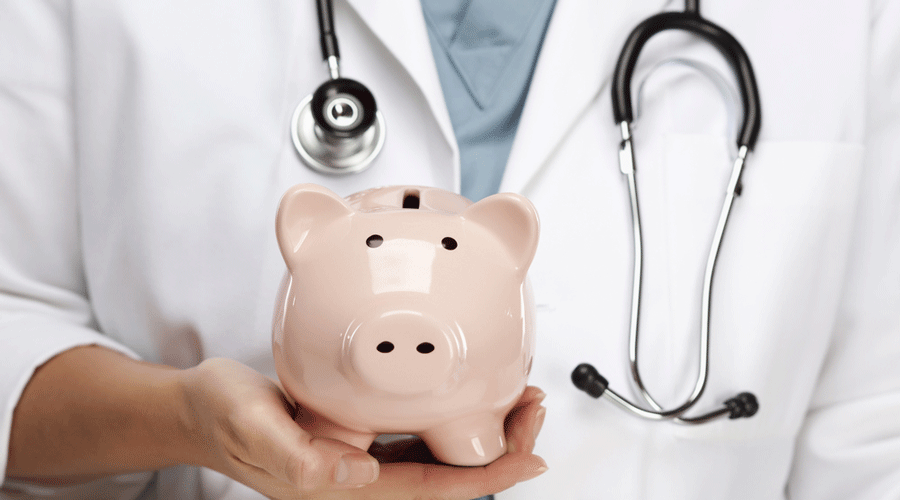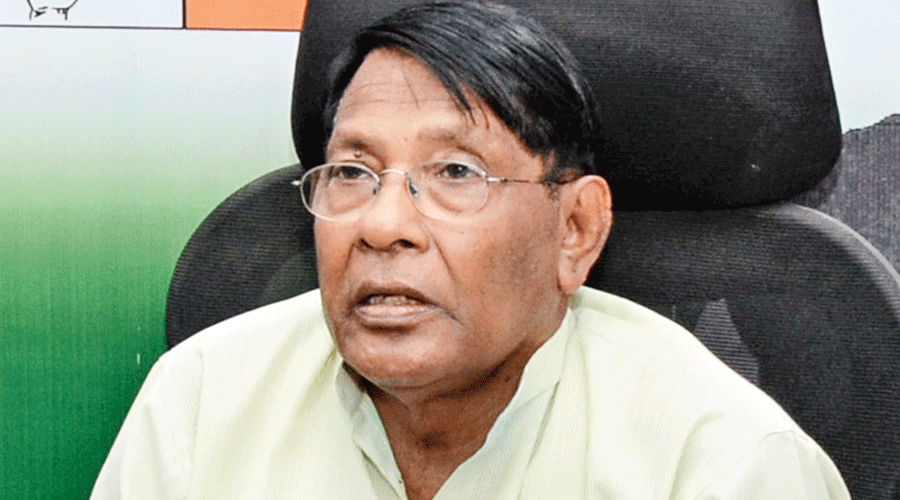India’s per capita healthcare expenditure at constant prices has remained near-stagnant despite increases in government spending and decreases in household spending on healthcare over a six-year period, the latest national health accounts report has shown.
India’s per capita total healthcare expenditure has changed little over that period, rising from Rs 3,174 in 2013-14 to Rs 3,503 in 2016-17 and declining to Rs 3,314 in 2018-19. The total healthcare expenditure in terms of GDP declined from 4 per cent in 2013-14 to 3.2 per cent in 2018-19, shows the report released by the Union health ministry on Monday.
The report says the government’s share of India’s total health expenditure increased to 40.6 per cent in 2018-19 from 28.6 per cent in 2013-14. Its share of per capita health expenditure rose from Rs 1,042 to Rs 1,815.
“At constant prices, the country’s per capita healthcare expenditure is nearly the same, actually lower,” said Indrani Gupta, professor and specialist in health economics at the Institute of Economic Growth, New Delhi.

Sanjay Mohanty, professor of population health at the International Institute of Population Sciences, Mumbai, who has tracked health spending patterns, said the steady fall in the total health expenditure in proportion to the GDP was “worrying”.
“The falling ratio tells us that our spending on health is lagging behind our economic growth — or the GDP has grown faster than the country’s increase in health spending,” Mohanty said. “And government spending is nowhere near the 2.5 per cent of the GDP, the goal it set in the 2017 national health policy.”
The government health expenditure measured as a proportion of the country’s gross domestic product (GDP) increased from 1.15 per cent in 2013-14 to 1.28 per cent in 2018-19. Government spending on primary healthcare increased from 51 per cent to 55 per cent over the same period, the report said.
Government-financed health insurance also rose 167 per cent from Rs 4,757 crore to Rs 12,680 crore.
As a consequence of such increased government spending, the health ministry said, the out-of-pocket household healthcare expenditure has declined substantially from 64.2 per cent of the country’s total health expenditure in 2013-14 to 48.2 per cent in 2018-19.
While the proportion of out-of-pocket household healthcare expenditure has fallen 25 per cent from 2013-14, Gupta said, that large change over six years masks the relatively small decline between the latest two years — from 48.8 per cent in 2017-18 to 48.2 per cent in 2018-19.
“The fall in the private (household) health expenditure is good, but government spending needs to go up commensurately for the total health spending to stay the same,” Gupta said.
Mohanty said the health accounts report did not take into account the impacts of the Pradhan Mantri Jan Aarogya Yojana (PMJAY) — a government-funded scheme that pays hospitalisation costs for vulnerable households — and increases in health spending over the past three years.
“Since Covid-19, government health spending has increased significantly — we thus expect some of these figures to change in the coming years,” Mohanty said.
The National Family Health Survey 2019-21 has revealed gains on multiple health parameters compared with the previous 2015-16 survey, despite the meagre change in the country’s per capita health spending.
But a population health expert said those gains — increases in levels of full childhood immunisation coverage, institutional deliveries and decreased childhood stunting, among other indicators — mainly cover maternal and child health.












